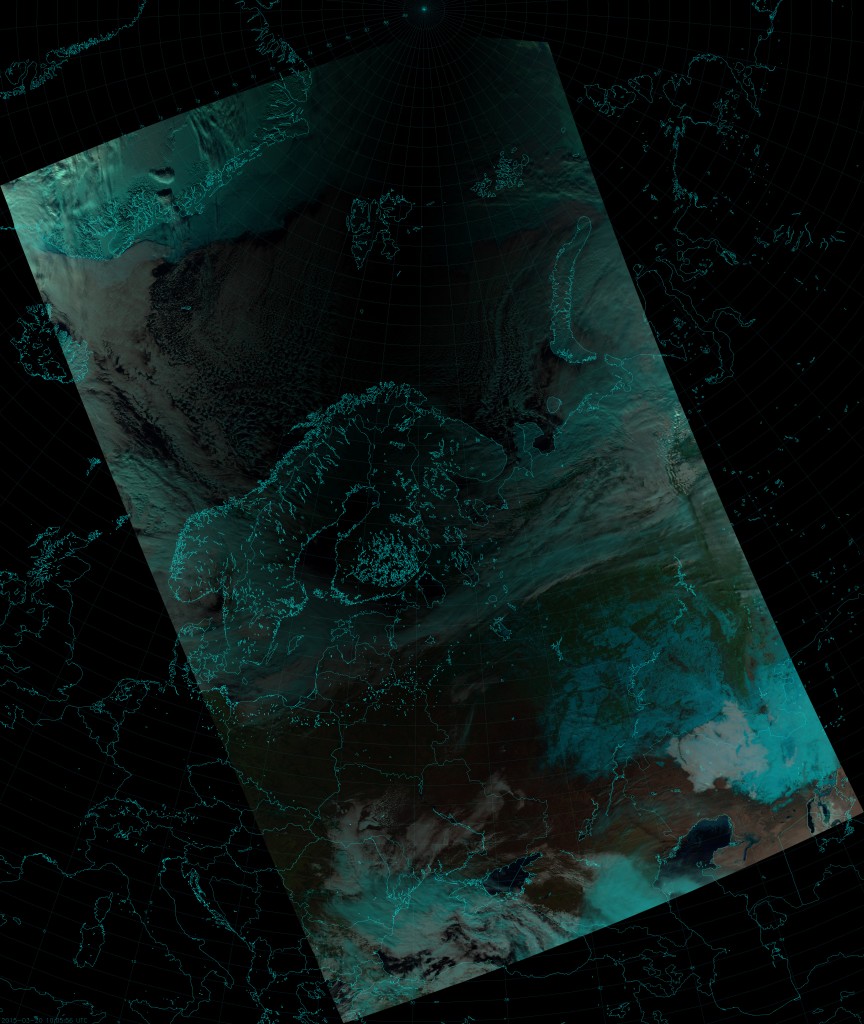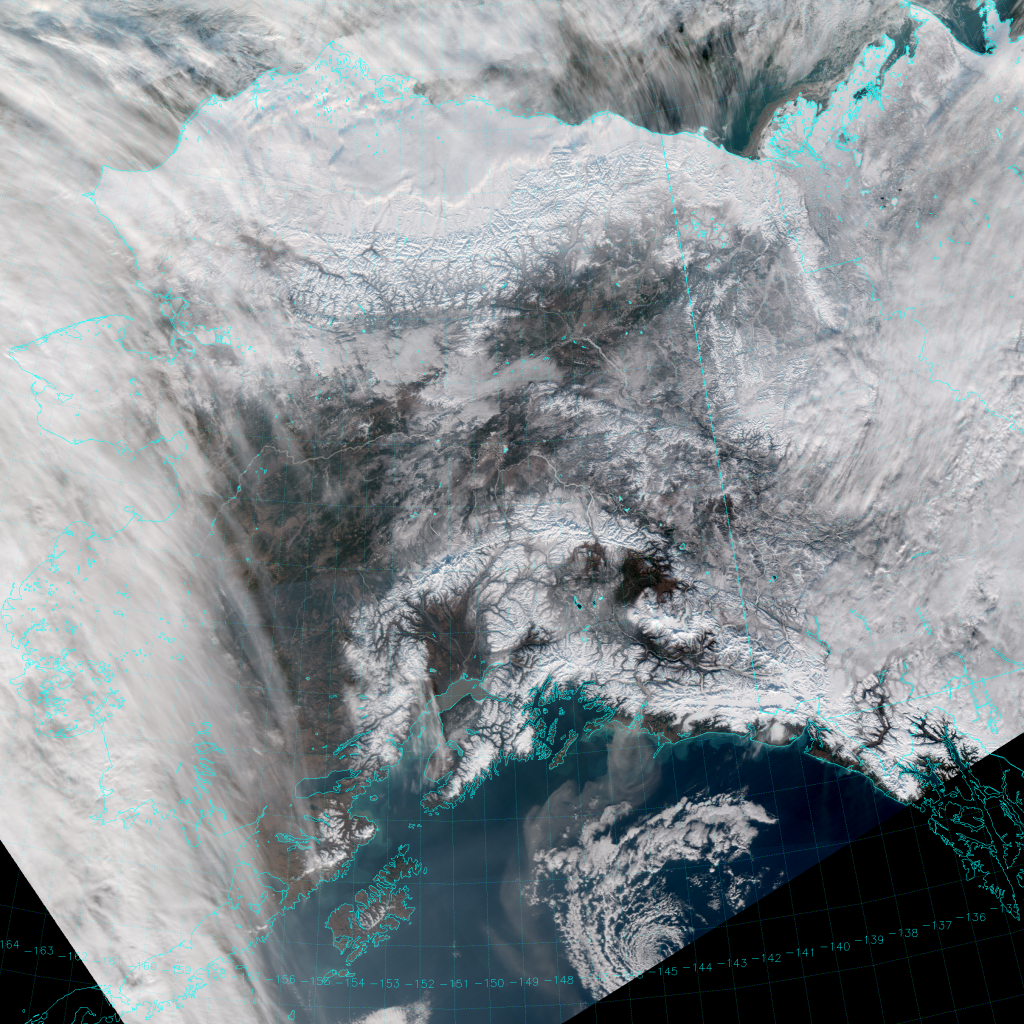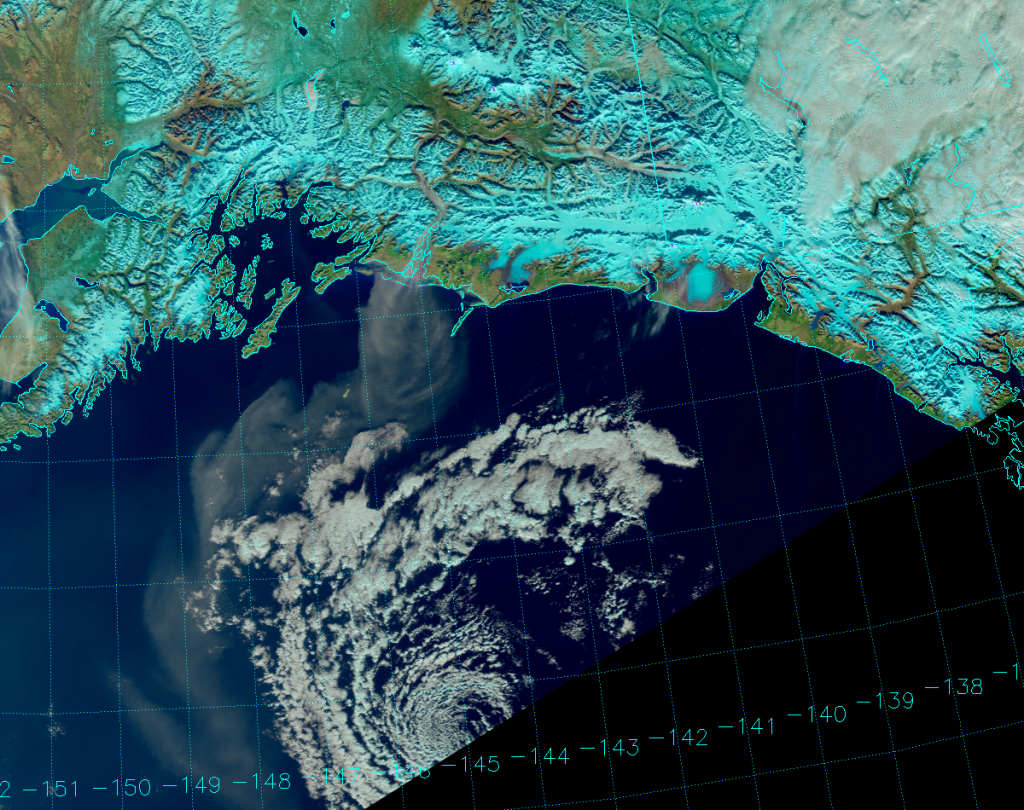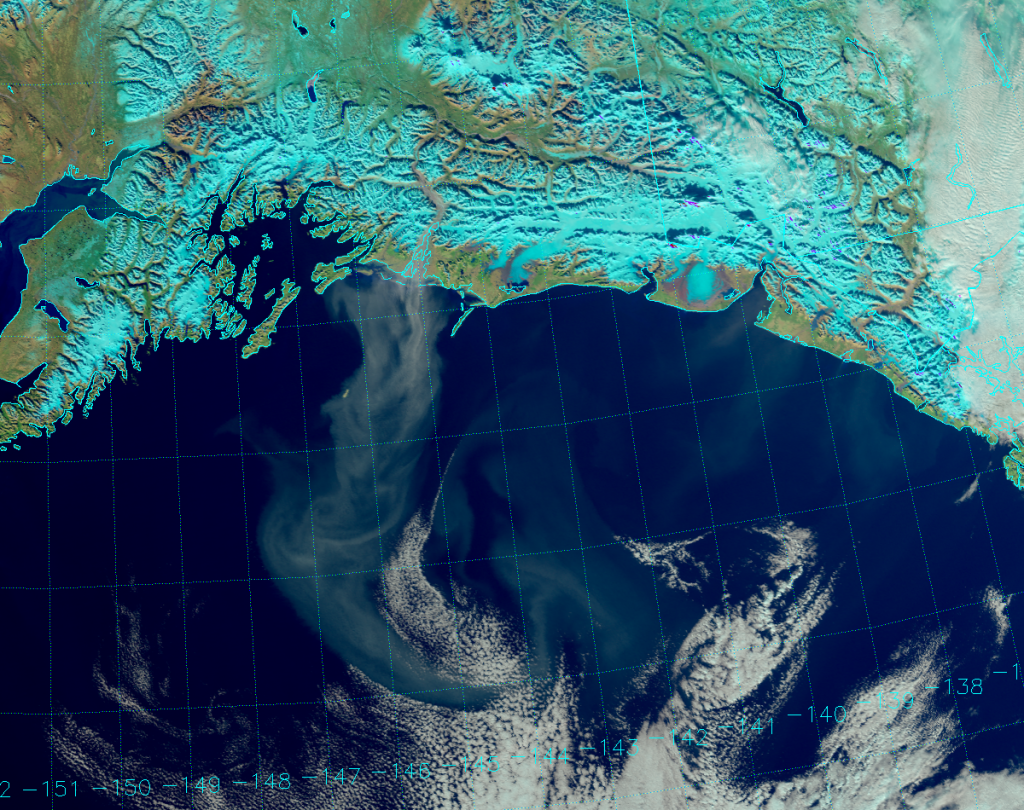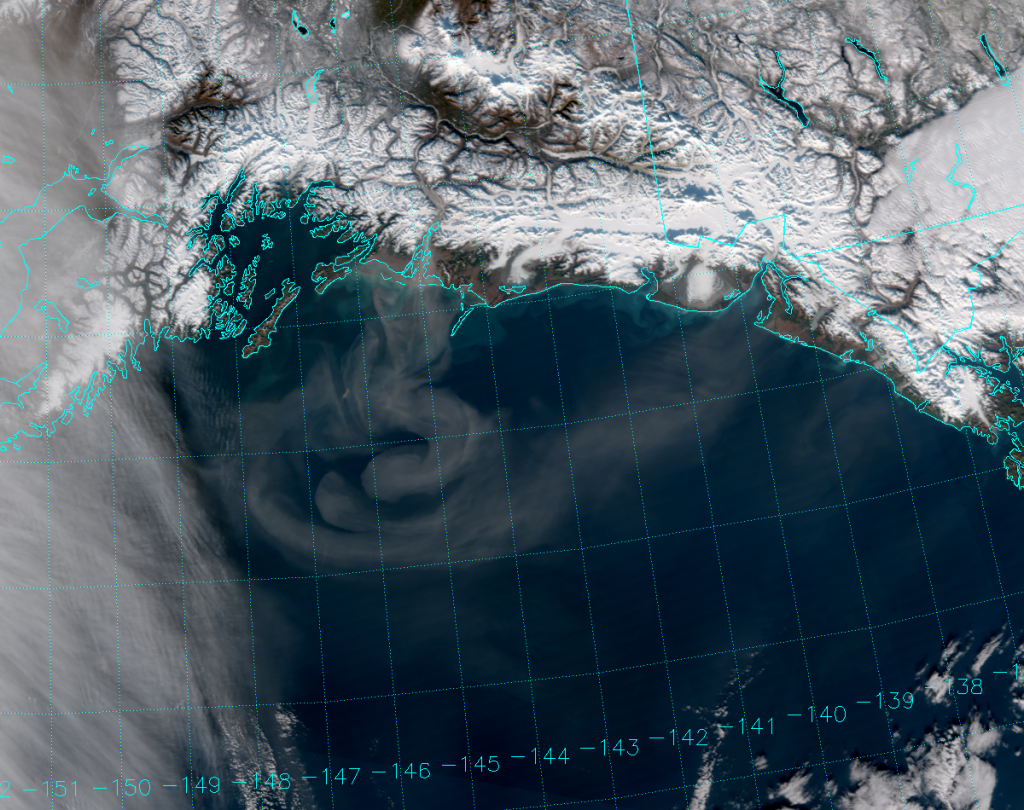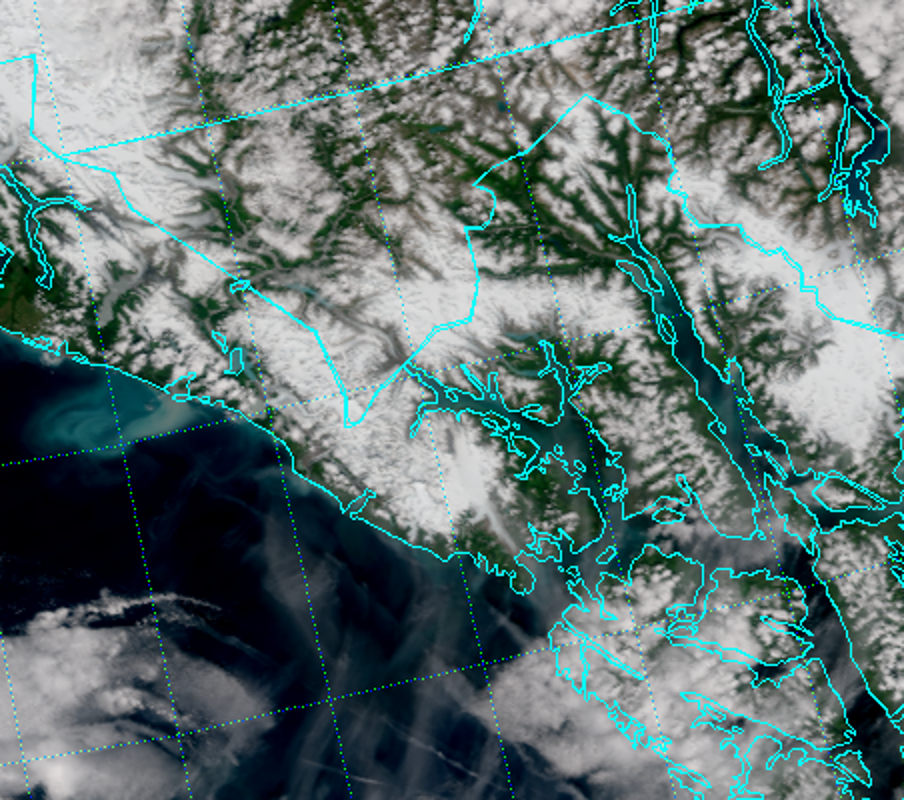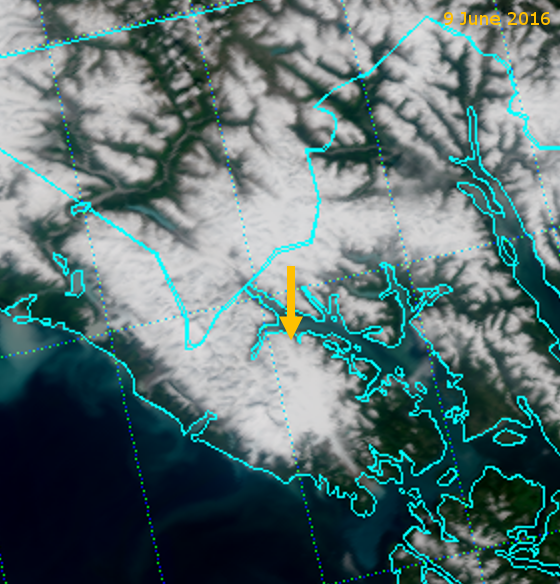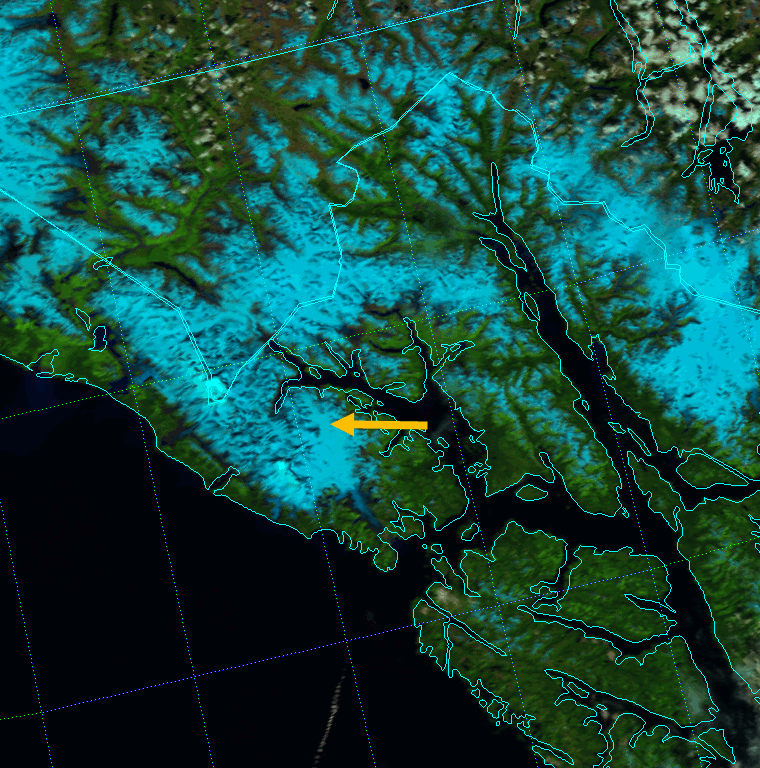As mentioned before on this blog, there are typhoons, hurricanes, and cyclones, and they’re all basically the same thing. They’re just given a different name depending on where they occur in the world. Similarly, there are many different names for winds (not counting the classification of wind speeds developed by a guy named Beaufort). There’s the Chinook, the Santa Ana, the bora, the föhn (or foehn), the mistral, the zonda, the zephyr and the brickfielder. (A more complete list is here.) Some of these winds are different names for the same phenomenon occurring in different parts of the world, like the föhn, the chinook, the zonda and the Santa Ana. Others are definitely different phenomena, with different characteristics (compare the mistral with the brickfielder), but they all have the same basic cause: the atmosphere is constantly trying to equalize its pressure.
The Mediterranean is home to wide variety of named winds, one of which is the sirocco (or scirocco). (Europe is home to wide variety of languages, so this wind is also known as “ghibli,” “jugo” [pronounced "you-go"], “la calima” and “xlokk” [your guess is as good as mine].) Sirocco is the name given to the strong, southerly or southeasterly wind originating over northern Africa that typically brings hot, dry air and, if it’s strong enough, Saharan dust to Europe. Of course, after picking up moisture from the Mediterranean, the wind becomes humid, making life unpleasant for people along the north shore. Hot, humid and full of dust. Perhaps it’s no surprise that the sirocco is believed to be a cause of insomnia and headaches.
Now, I don’t know how hot it was, but an intense low pressure system passed through the Mediterranean around Leap Day and, out ahead of it, strong, southerly winds carried quite a bit of dust from northern Africa into Italy. Here’s what it looked like in Algeria. And here’s what it looked like in Salento. See if you can see that dust in these True Color VIIRS images:

VIIRS True Color RGB composite of channels M-3, M-4 and M-5 (12:09 UTC 28 February 2016).

VIIRS True Color RGB composite of channels M-3, M-4 and M-5 (11:48 UTC 29 February 2016)
No problem, right? With True Color imagery, the dust is usually easy to identify and distinguish from clouds and the ocean because it looks like dust. It’s the same color as the sky over Salento, Italy in that video I linked to. The top image shows multiple source regions of dust (mostly Libya, with a little coming from Tunisia) being blown out over the sea. The second image shows one concentrated plume being pulled into the clouds over the Adriatic Sea, headed for Albania and Greece.
By the way, this storm system brought up to 2 meters (6.5 feet) of snow to northern Italy, and even brought measurable snow to Algeria! Africa and Europe made a trade: you take some of my dust, and I’ll take some of your snow.
But, this wasn’t the worst dust event to hit Europe recently. Here’s what the VIIRS True Color showed over Spain and Portugal on 21 February 2016:
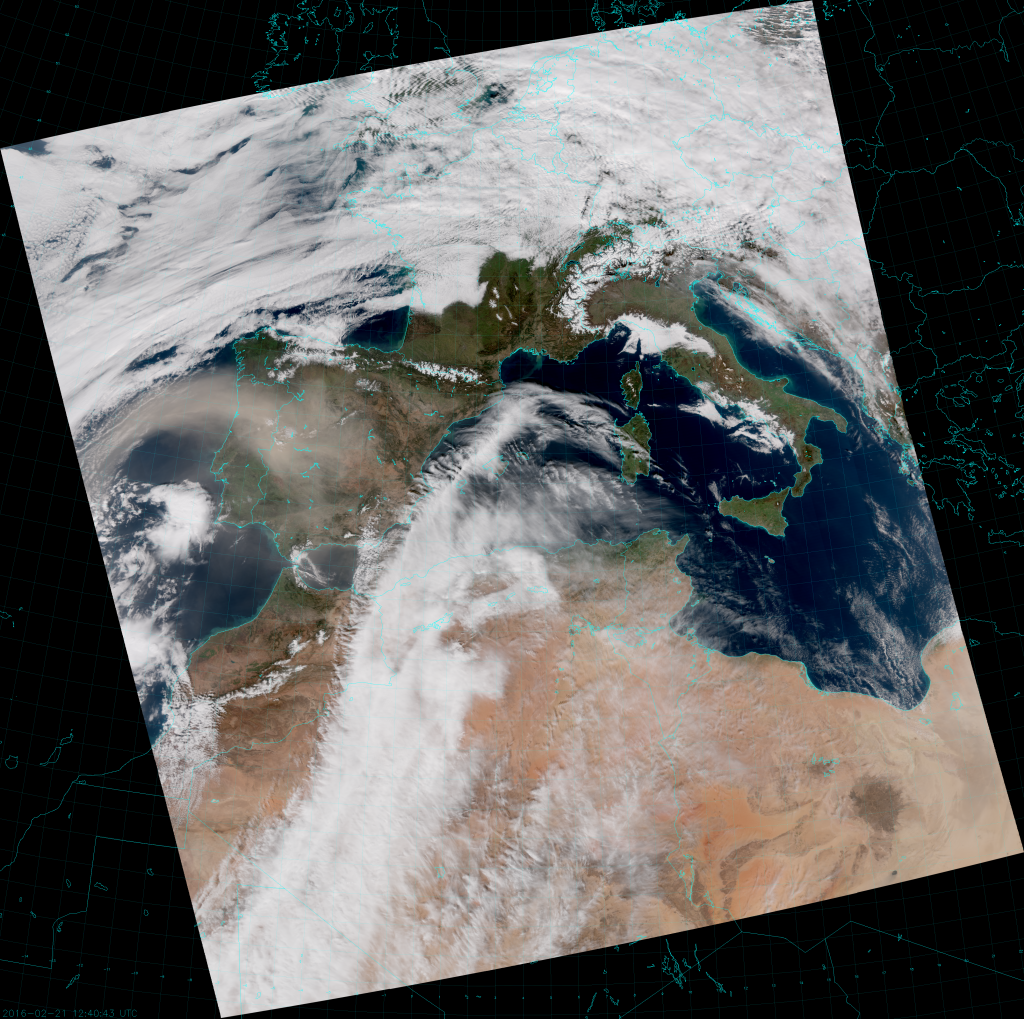
VIIRS True Color RGB composite of channels M-3, M-4 and M-5 (12:40 UTC 21 February 2016).
And VIIRS wasn’t the only one to see this dust. Here’s a picture taken by Tim Peake, an astronaut on the International Space Station. Again, it’s easy to pick out the dust because it almost completely obscures the view of the background surface. But, what if the background surface is dust colored?
We switch now to the other side of the world and the Takla Makan desert in China, where the dust has been blowing for the better part of a week:
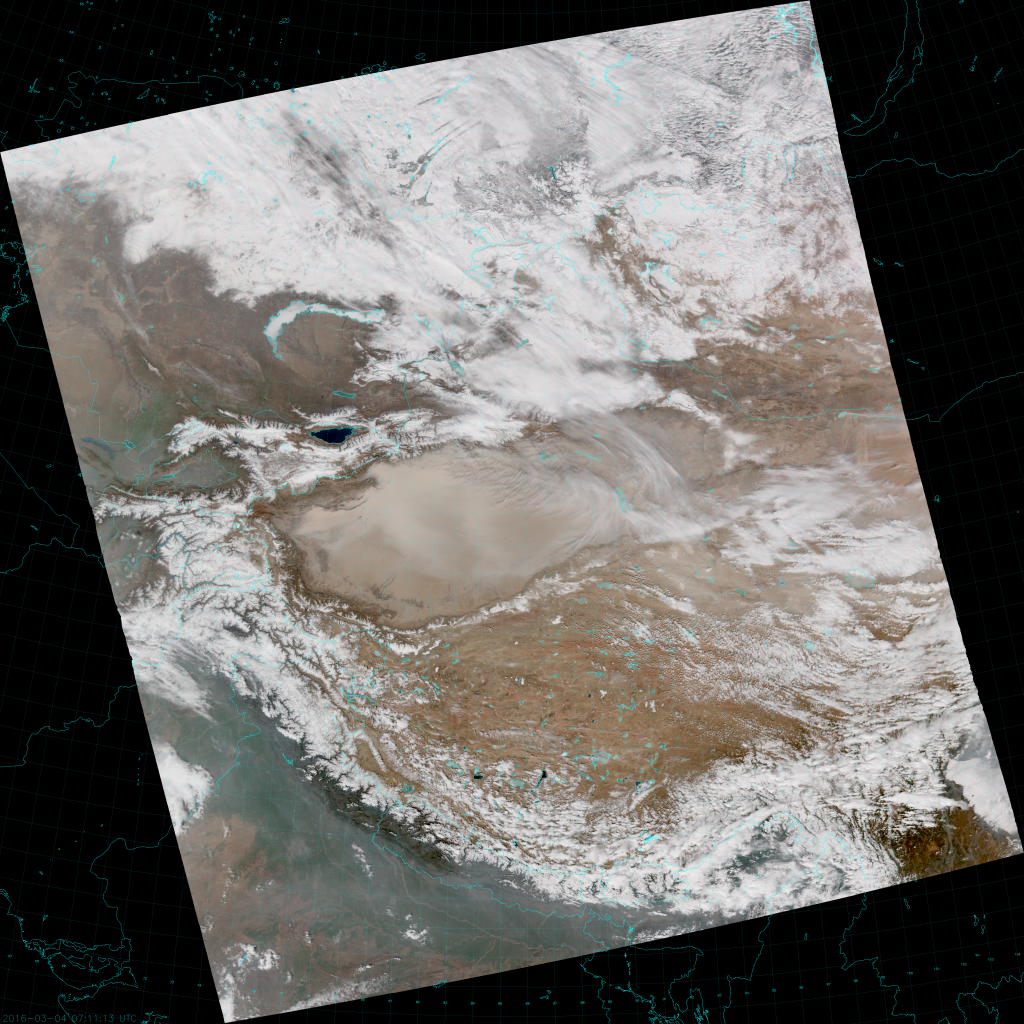
VIIRS True Color RGB composite of channels M-3, M-4 and M-5 (07:11 UTC 4 March 2016).
Can you tell what is dust and what is the desert floor? Can you see the Indian Super Smog on the south side of the Himalayas? Here is the same scene on a clear (no dust) day:

VIIRS True Color RGB composite of channels M-3, M-4 and M-5 (07:49 UTC 2 March 2016).
There is a subtle difference there, but you need good eyesight to see it. It might be easier to see if you loop the images:
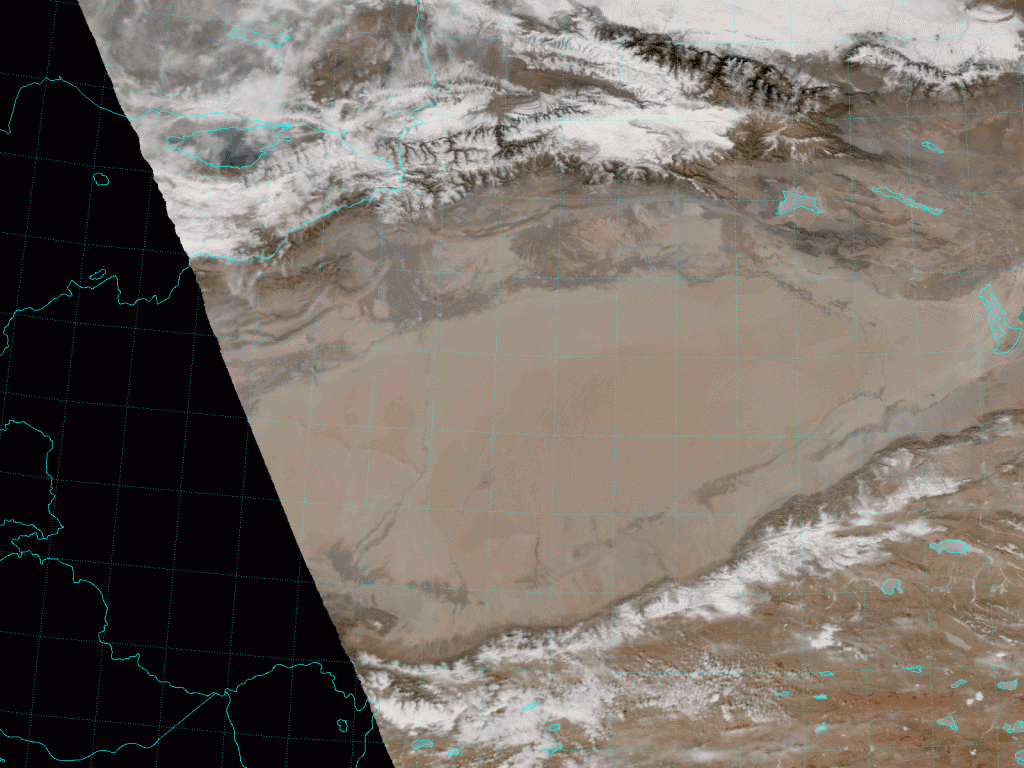
Animation of VIIRS True Color images of the Takla Makan desert (1-7 March 2016).
You’ll have to click on the image to see it animate.
Did you notice the dark brown areas surrounding the Takla Makan? Those are areas that have green vegetation during the summer. Notice how they become completely obscured by the dust as the animation progresses. That’s one one way to tell that there’s dust there. But, as we have seen before, there are other ways to see the dust.
There’s EUMETSAT’s Dust RGB composite applied to VIIRS:

Animation of VIIRS EUMETSAT Dust RGB images of the Takla Makan desert (1-7 March 2016).
That’s another animation, by the way, so you’ll have to click on it to see it animate. The same is true for the Dynamic Enhanced Background Reduction Algorithm (DEBRA), which we also talked about before:

Animation of VIIRS DEBRA Dust Product images of the Takla Makan desert (1-7 March 2016)
But, there’s one more dust detection technique we have not discussed before: the “blue light absorption” technique:

Animation of VIIRS Blue Light Dust images of the Takla Makan desert (1-7 March 2016).
The Blue Light Dust detection algorithm keys in on the fact that many different kinds of dust absorb blue wavelengths of light more than the longer visible wavelengths. It uses this information to create an RGB composite where dust appears pastel pink, clouds and snow appear blueish and bare ground appears green. Of course, other features can absorb blue light as well, like the lakes near the northeast corner of the animation that show up as pastel pink. But, depending on your visual preferences and ability to distinguish color, the Blue Light Dust product gives another alternative to the hot pink of the EUMETSAT Dust RGB, the yellow of DEBRA, and the slightly paler tan of the True Color RGB.
One question you might ask is, “How come DEBRA shows a more vivid signal than the other methods?” In the True Color RGB, dust is slightly more pale than the background sand, because it’s made up of (generally) smaller sand particles (which are more easily lofted by the wind) that scatter light more effectively, making it appear lighter in color. In the EUMETSAT Dust RGB, dust appears hot pink because the “split window difference” (12 µm – 10.7 µm) is positive, while the difference in brightness temperatures between 10.7 µm and 8.5 µm is near zero and the background land surface is warm. In DEBRA, the intensity of the yellow is related to the confidence that dust is present in the scene based on a series of spectral tests. DEBRA is confident of the presence of dust even when the signals may be difficult to pick out in the other products, either because it’s a superior product, or because its confidence is misguided. (Hopefully, it’s the former and not the latter.)
By the way, the Takla Makan got its name from the native Uyghurs that live there. Takla Makan means “you can get in, but you can’t get out.” It has also been called the “Sea of Death.” I prefer to call it “China’s Big Bowl of Dust.” It’s a large area of sand dunes (bigger than New Mexico, but smaller than Montana) surrounded on most of its circumference by mountains between 5000 and 7000 m (~15,000-21,000+ feet!). The average annual rainfall is less than 1.5 inches (38 mm). That means when the wind blows it easily picks up the dusty surface, but that dust can’t go anywhere because it’s blocked by mountains (unless it blows to the northeast). The dust is trapped in its bowl.
The Takla Makan is also important historically, because travelers on the original Silk Road had to get around it. Notice on this map, there were two routes: one that skirted the northern edge of the Takla Makan and one that went around the southern edge. This part of Asia was the original meeting point between East and West.
CIRA produces all four imagery products over the Takla Makan desert in near-real time, which you can find here. And, in case you’re curious, you can check out how well DEBRA and the EUMETSAT Dust products compare for the dust-laden siroccos over southern Europe and northern Africa by clicking here and here (for the first event over Spain and Portugal) or here and here (for the second one over Italy and the Adriatic Sea).



